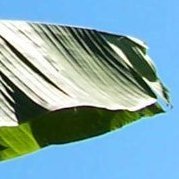Hmfd Cases No That Bad: Thai Scientists
-
Recently Browsing 0 members
- No registered users viewing this page.
Announcements
-
Topics
-
Latest posts...
-
319
Photos of your Grow in Thailand
Weeds are weeds. They are there for the chopping. 🤣 -
1
Yamaha NMAX 2018 ABS Pump
I met a guy who had Xmax and the same issue, he said he did extensive research and went to quite a few mechanics. It turns out the Nmax and Xmax have the exact same ABS unit and it's 20k baht to replace for both. He said that's like half the price of Nmax and he would never dream of paying it..! But for his Xmax he was seriously considering it, until a guy told him the unit can be repaired for 2000 baht...😳 He was in Phuket and this repair can only be done by a guy in Bangkok. So the mechanic opened his ABS unit and shipped it to Bangkok, he couldn't use his bike for about two weeks. Then the unit came back all repaired and working, cost was 2k + some shipping...!? I don't know if it meant just the light was okay, or the ABS would actually do it's job properly...? 🤔 I'm sorry I have no contact, but ask on Thai Facebook Xmax or Nmax groups, I'm sure somebody reply,... in Thai, need Google Translate... -
79
U.S. Senators Introduce Legislation to Counter UN Actions Against Israel
US Congress owned lock, stock and barrel by the Israel Lobby. How pervasive is it? I highly recommend this book detailing the subject by highly respected political science professors at Harvard and the University of Chicago. https://en.wikipedia.org/wiki/The_Israel_Lobby_and_U.S._Foreign_Policy -
10
Cycle Lane chaos...
No need to get upset - this is Thailand. That is only a small piece of street. The whole Jomtien's beach been f'd up -
10
Cycle Lane chaos...
They did this to my home town in San Jose, California. They stripped a car lane and gave it to bicycles. I have never seen a single bike in the newly created bike lane. But now the cars are backed up for multiple blocks. Thailand and the world... Please stop voting for them. -
308
Thailand goes all in on The Homosexual Movement
Currently 76 million and counting 😉. The left keeps bashing the right with name calling and innuendos. Hopefully they keep it up which will ensure future Republican victories. -
2,774
Thai immigration online 90 day reporting system
Not quite, but the Immigration Bureau tries to make you believe that it is so with a page on their website.- 1
-

-
34
Visa on Arrival refused - what is the best way to re-enter Thailand?
Yes you can still be denied by Imm at arrival depending on how quickly you come back even with a visa. A Visa is not a guarantee of admittance only authorization to travel to Thailand. As has been mention they are on to the fact you are not a tourist so pick your visa wisely
-
-
Popular in The Pub
.png.3b3332cc2256ad0edbc2fe9404feeef0.png.8488ab72b8bb2e508209bfe3211b6e08.png)




.thumb.jpeg.42eea318e3350459f0aaaa5460326bca.jpeg)





Recommended Posts
Create an account or sign in to comment
You need to be a member in order to leave a comment
Create an account
Sign up for a new account in our community. It's easy!
Register a new accountSign in
Already have an account? Sign in here.
Sign In Now